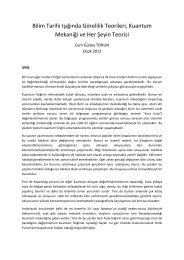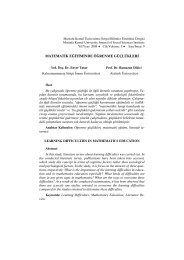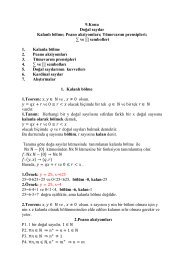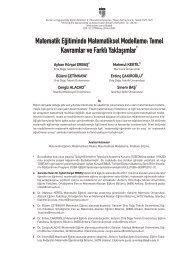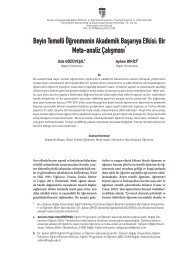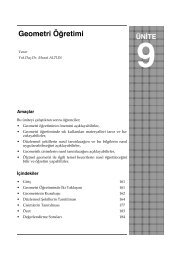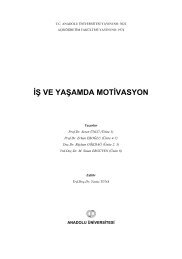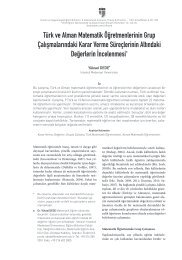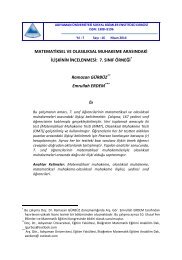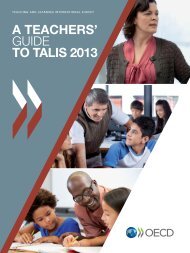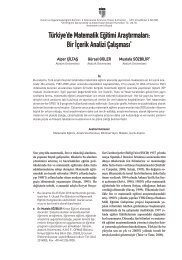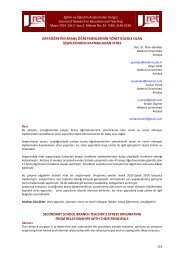Ufuk-U_niversitesi-SBE-Dergisi-S-ayı-5-kopya
Ufuk-U_niversitesi-SBE-Dergisi-S-ayı-5-kopya
Ufuk-U_niversitesi-SBE-Dergisi-S-ayı-5-kopya
You also want an ePaper? Increase the reach of your titles
YUMPU automatically turns print PDFs into web optimized ePapers that Google loves.
noteworthy to mention that multilingualism leads to characteristics different frombilingualism at the individual, sociolinguistic, and educational levels (Cenoz & Gorter, 2005).1.3. Definition of Language Learning StrategiesMany variables as affective, social style or psychological characteristics can contributeto the success of a language learner, language learning strategies are different from them asthey are behaviors and thought processes used by a learner in the process of learning (Wenden& Rubin, 1987). Also called learning skills, learning-to-learn skill, thinking skill or problemskill,Oxford (1990) defined language learning strategies as “steps taken by students toenhance their own learning” (p. 1). Studies on these strategies initially worked on theidentification of the strategies good and successful language learners do to learn a language.These studies concluded that strategies have not only an impact on the proficiency and selfconfidencelevel but also on the effectiveness in using a second language based on thefrequency and types of strategies (Psaltou-Joycey & Kantaridou, 2009; Purdie & Oliver,1999). In a similar vein, Gardner and McIntyer (1993) suggest that several factors determinesecond language proficiency and that language learning strategies is one of them.Various classifications of language learning strategies have been purposed, but one ofthe most know classification has been done by Oxford (1990) dividing the strategies intodirect and indirect strategies. Direct strategies deal with the new language working with thelanguage itself; while indirect strategies are responsible for the general management oflearning. These categories are further divided into three subcategories each. The directstrategies include memory, cognitive and compensation strategies (see Figure 1 taken fromOxford, 1990, p.16). When examined individually, memory strategies are strategies used to“enable learners to store verbal material and then retrieve it when needed for communication”(Oxford, 1990, p.39); while cognitive strategies include various functions such as transferring,recombining and analyzing. The third set of strategies of the direct strategies is thecompensation strategies which aid language learners in using “the new language for eithercomprehension or production despite limitations in knowledge” (Oxford, 1990, p.47). As theyinclude guessing and overcoming limitations, they compensate for the insufficient grammarstructures and vocabulary items.On the other hand; the indirect strategies comprises of metacognitive, affective andsocial strategies. Metacognitive strategies are responsible for the coordination andorganization of the learning process which includes arranging and planning learning.60





